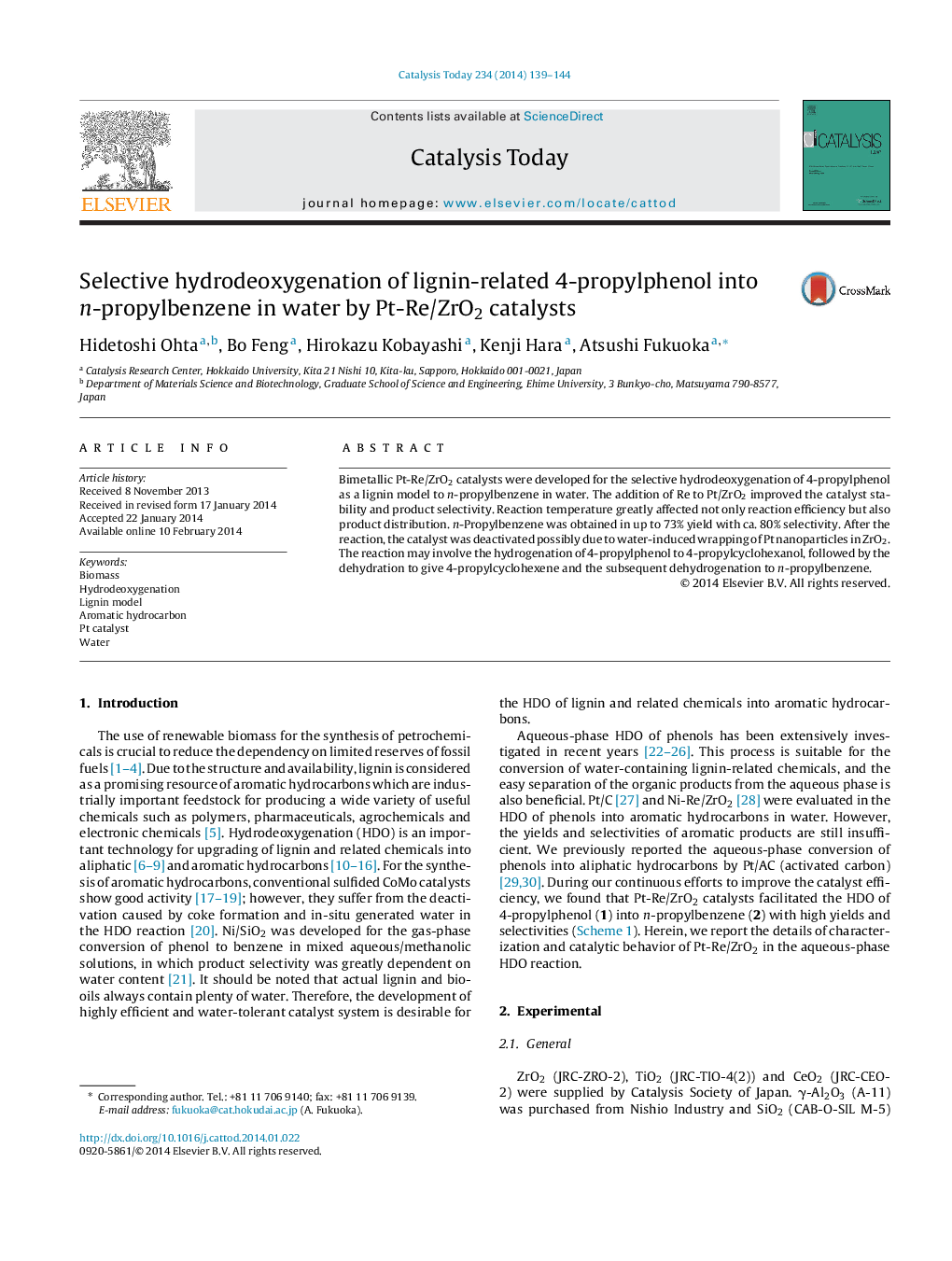| Article ID | Journal | Published Year | Pages | File Type |
|---|---|---|---|---|
| 54255 | Catalysis Today | 2014 | 6 Pages |
•Aqueous-phase hydrodeoxygenation of 4-propylphenol into n-propylbenzene.•Pt-Re/ZrO2 with Pt/Re molar ratio of 3 gave the highest product selectivity.•Reaction temperature greatly influenced the catalytic activity and selectivity.•n-Propylbenzene was obtained with up to 73% yield and with up to 85% selectivity.
Bimetallic Pt-Re/ZrO2 catalysts were developed for the selective hydrodeoxygenation of 4-propylphenol as a lignin model to n-propylbenzene in water. The addition of Re to Pt/ZrO2 improved the catalyst stability and product selectivity. Reaction temperature greatly affected not only reaction efficiency but also product distribution. n-Propylbenzene was obtained in up to 73% yield with ca. 80% selectivity. After the reaction, the catalyst was deactivated possibly due to water-induced wrapping of Pt nanoparticles in ZrO2. The reaction may involve the hydrogenation of 4-propylphenol to 4-propylcyclohexanol, followed by the dehydration to give 4-propylcyclohexene and the subsequent dehydrogenation to n-propylbenzene.
Graphical abstractFigure optionsDownload full-size imageDownload high-quality image (133 K)Download as PowerPoint slide
